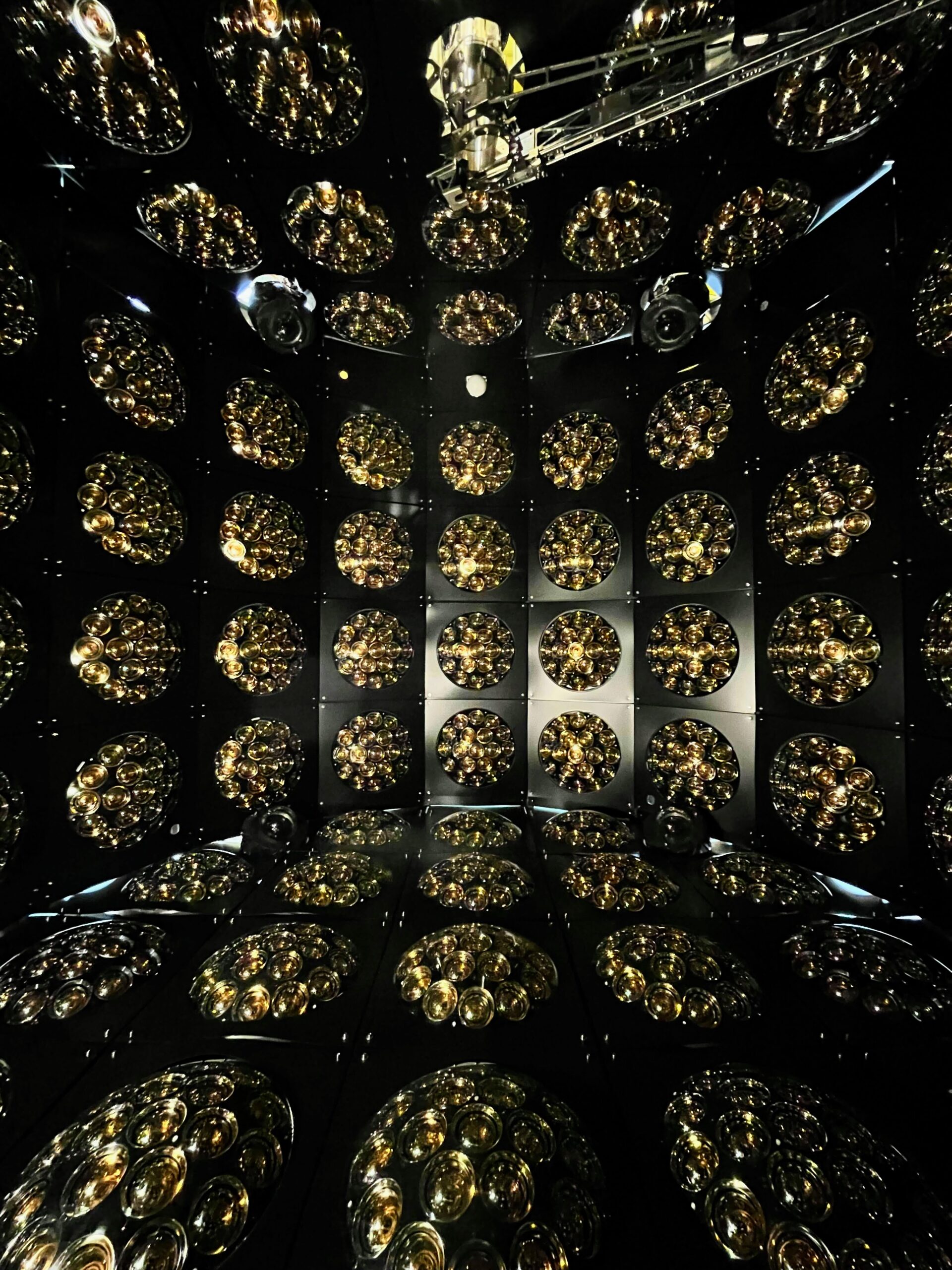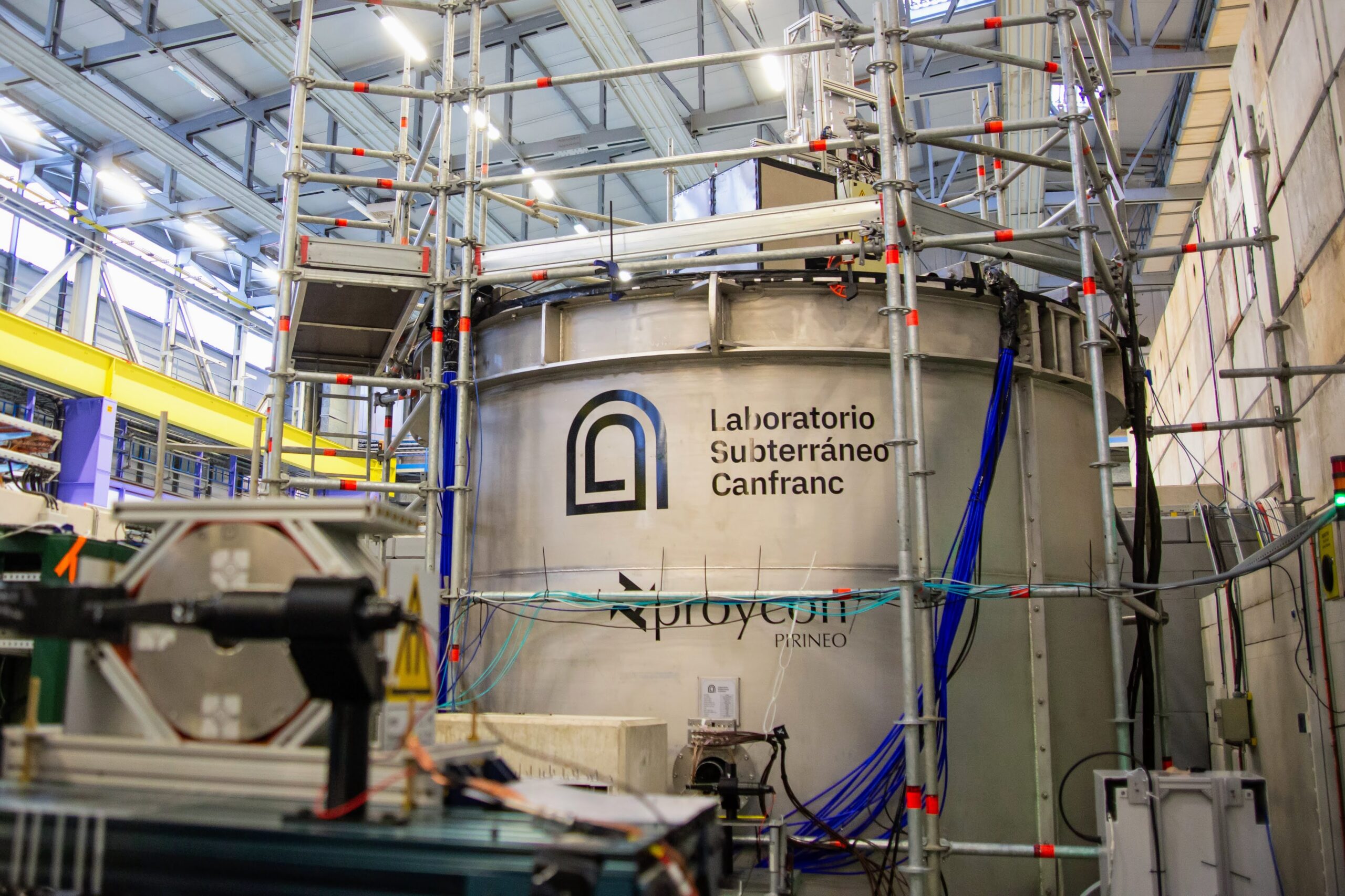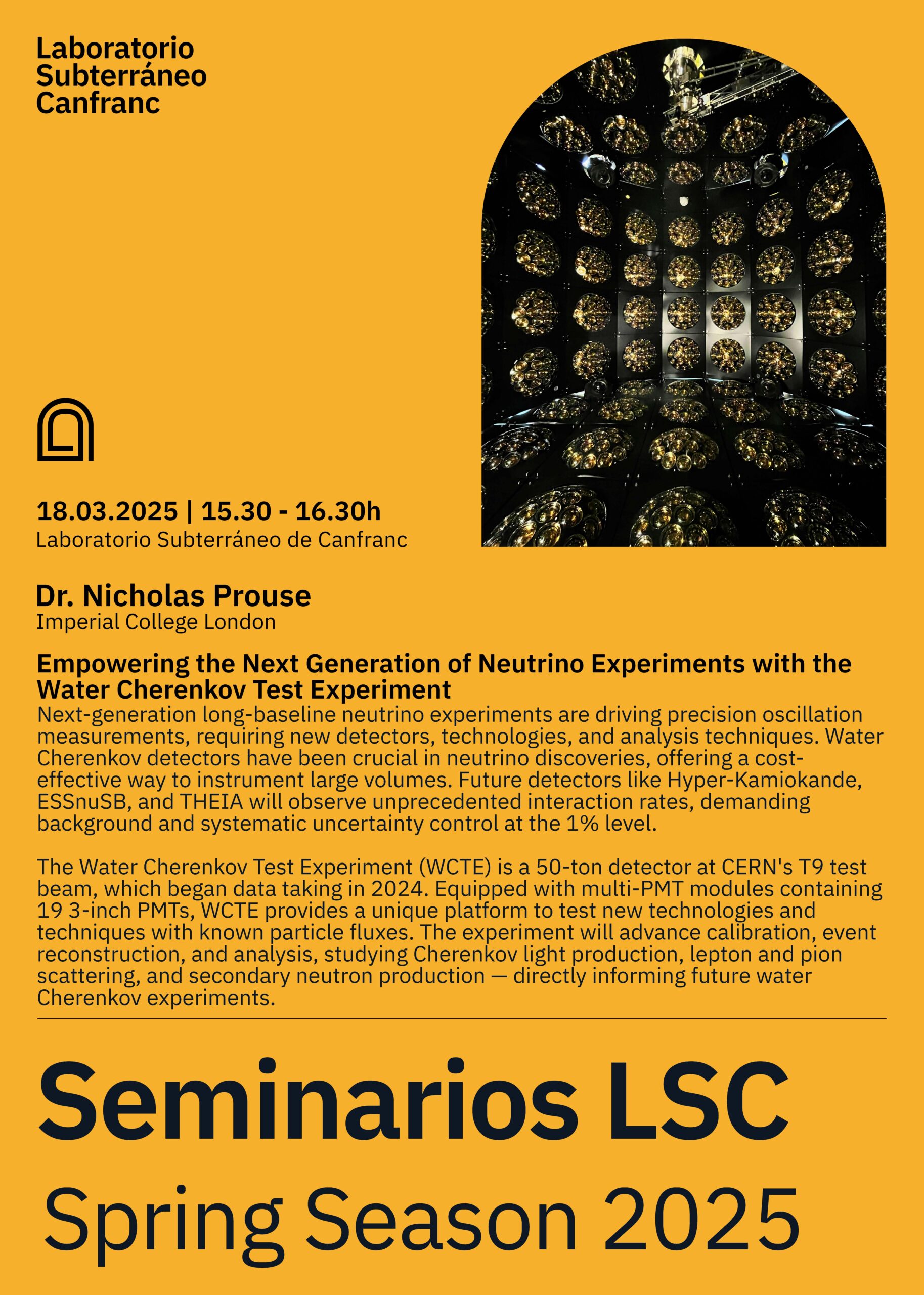Dr. Nicholas Prouse – Imperial College London
18 de marzo de 2025
Empowering the Next Generation of Neutrino Experiments with the Water Cherenkov Test Experiment
The current and next generation of long-baseline neutrino experiments are bringing the era of precision neutrino oscillation measurements. New detectors, technologies and analysis techniques are being developed to meet the challenges posed by these precision measurements. Water Cherenkov neutrino experiments have played a crucial role in neutrino discoveries over the years, providing an established and affordable way to instrument huge detectors, with the future water-based detectors of Hyper-Kamiokande, ESSnuSB and THEIA expected to observe unprecedented rates of neutrino interactions. A corresponding suppression of backgrounds and systematic uncertainties to the 1% level is required to achieve the goals of these experiments.
The Water Cherenkov Test Experiment (WCTE) is a 50-ton water Cherenkov detector at CERN’s T9 test beam, which began taking data in 2024. The WCTE detector observes tagged 200 MeV to 1 GeV electrons, muons, charged pions and protons, with a dedicated setup for tagged photons, and a gadolinium-doped water mode for observing neutron captures. WCTE will be used to study the water Cherenkov detector response using new photosensor technologies, instrumented with multi-PMT modules each containing 19 3-inch PMTs. This provides a unique opportunity for new technologies and techniques to be demonstrated with known particle fluxes. Advances in calibration, event reconstruction and analysis will be used to study Cherenkov light production, lepton and pion scattering, secondary neutron production, and a range of other measurements, all providing direct inputs to enhance existing and future water Cherenkov experiments.
After providing an overview of long-baseline neutrino physics, this seminar will present the WCTE detector and its physics goals, the novel analyses that will be used and demonstrated by each of its measurements, and how they will facilitate the goals of next generation neutrino experiments.




